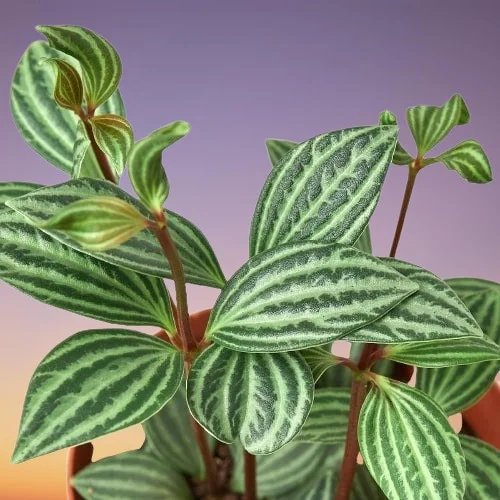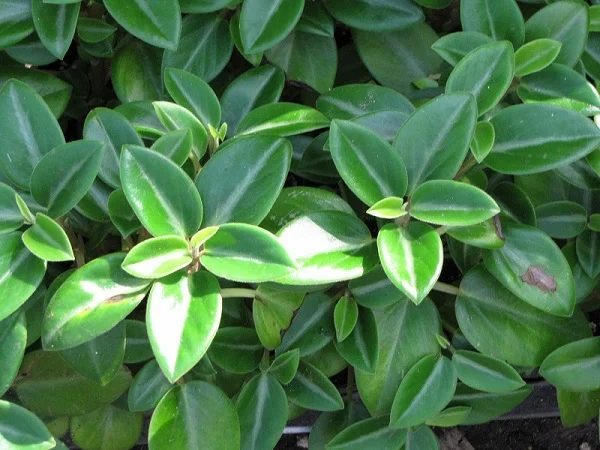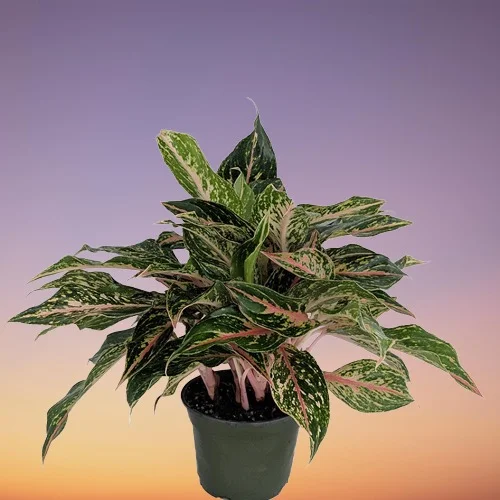Peperomia Plants Propagation by 5 Easy Propagation Methods
Some links in this post may be affiliate links
Peperomia (Radiator Plants) are propagated from leaf cuttings, stems cuttings or by plant division. The cuttings root easily and there is no need for a rooting hormone. The cuttings can be rooted either in water or in soil.
The best time to propagate Peperomia is in the beginning of the growing season (spring to early summer) when the plant is actively growing. At this time, the plant has enough food reserves which are necessary for faster establishment. Avoid propagating in winter unless you have grow lights and a humidity dome.
Generally, Peperomia varieties are popular houseplants which thrive in medium to bright indirect light and moderately moist fertile, well-drained soil coupled with monthly feeding in spring and summer. They require warm and humid conditions to flourish. Learn how to grow and care for Peperomia indoors.
Peperomia are easy to propagate. We have outlined herebelow 5 propagation methods by which you can increase your plants. Keep reading for a detailed account on these methods.
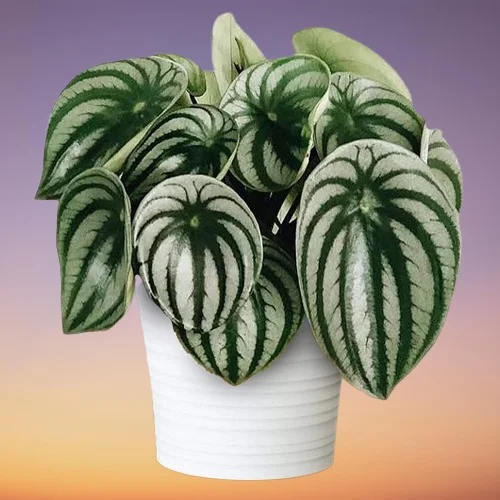
1. Peperomia Plant leaf propagation in water
Peperomia leaf cuttings root easily and there is no need for a rooting hormone.
- Take leaf cuttings from a healthy plant and ensure each leaf cutting has a petiole as this is where new growth will come from.
- Allow some time for the formation of a protective callus tissue over the cuts of the leaf cuttings to prevent rotting.
- Place the leaf cuttings in a jar of clean plain water or in a propagation station and change the water every 5-7 days.
- Place the set up in a warm, well-lit place until growth begins at the base of the cuttings leaf petiole. Allow enough time for substantial growth of the roots and new leaves. Roots appear in 3-4 weeks.
- Transfer the rooted cuttings when the roots are about 2-4 inches long to individual pots in moist, free-draining soil. For a fuller plant, transfer several cuttings in one pot.
- Place the pots in a warm, well-lit place away from direct sunlight to avoid scorching.
- Maintain the soil moist until the new plants are well established after which you can begin routine care.
2. Peperomia Plant leaf propagation in soil
- Take leaf cuttings from a healthy plant and ensure each leaf cutting has a petiole as this is where new growth will come from.
- Place the leaf cuttings in a cool spot for 1-3 days to allow for the formation of a protective callus tissue over the cuts of the leaf cuttings to prevent rotting.
- Fill a rooting container or pot with a free-draining soil. Moisten the soil slightly.
- Once callused, insert leaf petiole of the cutting in the soil. Gently firm the soil around the petiole.
- Cover the set up with clear polythene to increase humidity and warmth but allow space for air circulation to prevent the cuttings from rotting.
- Place the set up in a well-lit place; avoid direct sunlight as it can cook the plants.
- Maintain the soil moist until new growth emerges and there is substantial growth. Roots appear in 4-5 weeks.
- Remove any dead foliage to maintain the set up clean and avoid disease infestation.
- When, you observe substancial growth at the base of the leaf petiole, carefully transfer the new plants into individual pots in free-draining soil. For a fuller plant, transfer several plants into one pot.
- Thoroughly wet the soil until the water comes out through the drainage holes.
- Position the pots in a well-lit plant away from direct sunlight and begin routine care.

3. Peperomia Plant propagation from stem cuttings in water
Peperomia stem cuttings root easily and usually there is no need for a rooting hormone.
Stem cuttings often root faster than leaf cuttings and result in more robust plants.
- Take stem cuttings of about 4-5 inches length from a healthy plant and ensure each cutting has at least 2 leaf nodes. Strip off the lower leaves.
- Place the cuttings in cool spot and allow 1-3 days for the formation of a protective callus tissue over the cuts of the cuttings to prevent rotting.
- Place the stem cuttings in a jar of clean plain water and change the water every 5-7 days.
- Position the set up in a well-lit place away from direct sunlight to avoid scorching.
- Allow enough time for substantial growth of the roots and new leaves. Roots appear in 2-3 weeks.
- Transfer the new plants into individual pots in moist, free-draining soil. For a fuller plant, transfer several cuttings in one pot.
- Place the pots in a brightly-lit place away from direct sunlight.
- Maintain the soil moist until the new plants are well established after which you can begin routine care.

4. Peperomia Plant propagation from stem cuttings in soil
- Take stem cuttings of about 4-5 inches length from a healthy plant and ensure each cutting has at least 2 leaf nodes.
- Strip off the lower leaves and leave 2-3 leaves on the top.
- Allow some time for the formation of a protective callus tissue over the cuts of the cuttings to prevent rotting.
- Fill a rooting container or pot with a free-draining soil. Moisten the soil lightly.
- With a pencil or anything similar make a hole in the center of the container. Ensure that the hole is wider than the diameter of the cutting.
- Once callused, insert about 2-3 inches of the cutting in the previously made hole. Gently tap and firm the soil around the base of the cutting.
- Cover the set up with clear polythene to increase humidity and warmth but allow space for air circulation to prevent the cuttings from rotting.
- Place the set up in a well-lit; avoid direct sunlight as it can cook the plants.
- Maintain the soil moist until new growth emerges and there is substantial growth. Roots appear in 2–4 weeks.
- Remove any dead foliage to maintain the set up clean and avoid disease infestation.
- When, you observe substancial growth, transfer the rooted stem cuttings to individual pots in free-draining soil. For a fuller plant, transfer several cuttings into one pot.
- Thoroughly wet the soil until the water comes out through the drainage holes.
- Position the pots in a brightly-lit place away from direct sunshine and begin routine care.
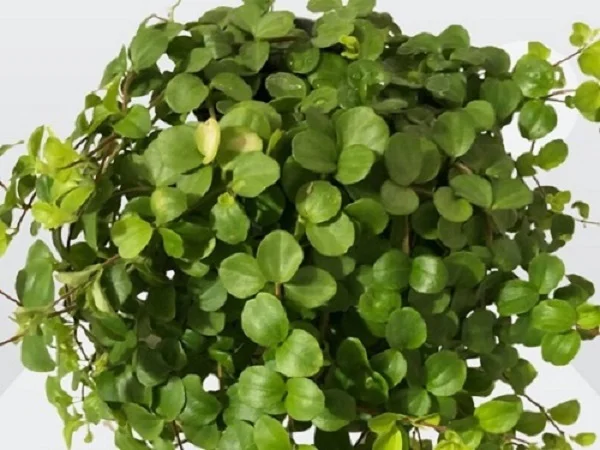
5. Peperomia Plant propagation by division
Division is ideal for large plants. It is the process of splitting an established Peperomia into smaller, root-ready plants.
- Water the plant thoroughly at least 1 day before to make it easier to divide and also hasten establishment.
- Remove the plant from its pot, identify natural clumps or offsets and carefully divide it into sections by pulling apart the roots. Ensure each section has adequate roots for faster establishment.
- Select a 6 or 8 inches pot and ensure that the pot has a drainage hole to prevent the soil from getting soggy as it can lead to rotting.
- Fill the pot with free-draining soil, moisten the soil slightly and make a hole in the center of the pot. Ensure that the hole is slightly wider than the root base of the section.
- Place the section in the previously made hole and lightly firm the soil around the base while taking care not to bury it too deep; maintain the section at the same soil level it was in the previous pot.
- Wet the soil thoroughly and place the set up in a warm, well-lit place away from direct sunlight.
- Maintain the soil moist until the new plant is well established after which you can begin routine care.
Peperomia propagation methods overview
Water propagation: Best for those who want to see root growth.
Soil propagation: It is preferred for faster acclimation of the roots to long-term growth.
Leaf propagation: Ideal for varieties with thick, fleshy leaves.
Stem propagation: Effective for trailing or upright varieties with visible nodes.
Division: Perfect for mature plants that have multiple clumps.
You liked it? Share on social media.
Related Content
Amazon Associates Disclosure
Homeplantsguide.com is a participant in the Amazon Services LLC Associates Program, an affiliate advertising program designed to provide a means for sites to earn advertising fees by advertising and linking to amazon.com.



